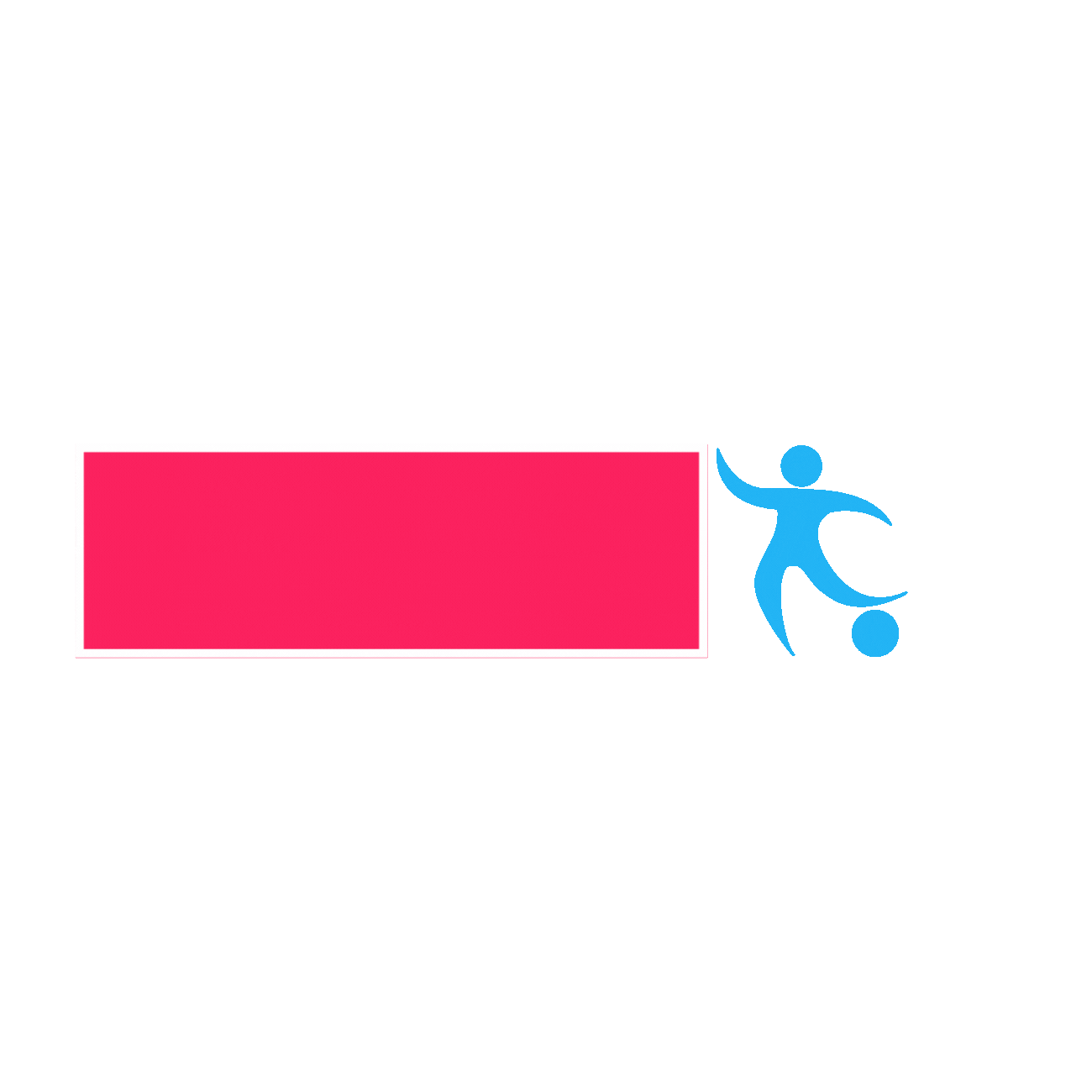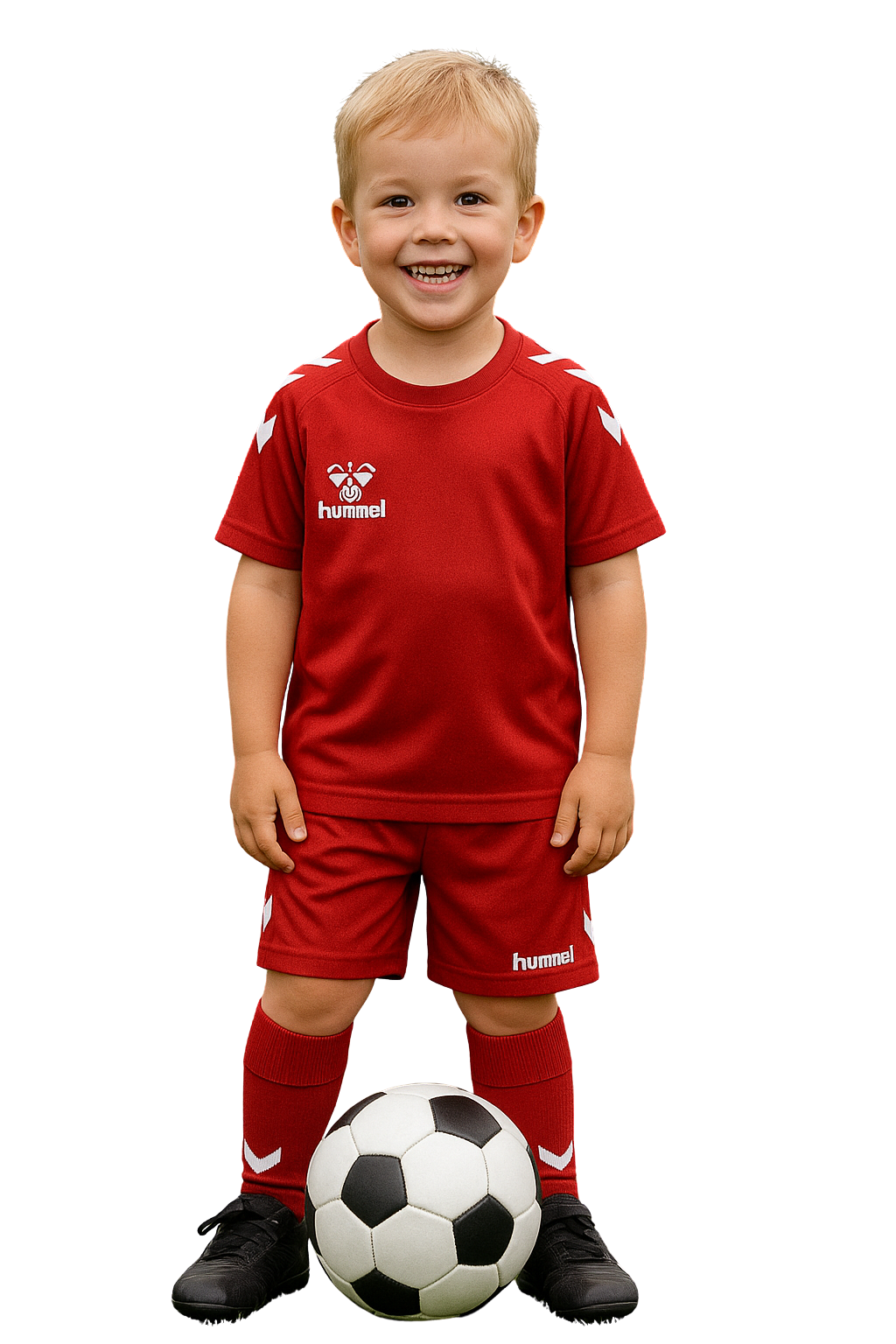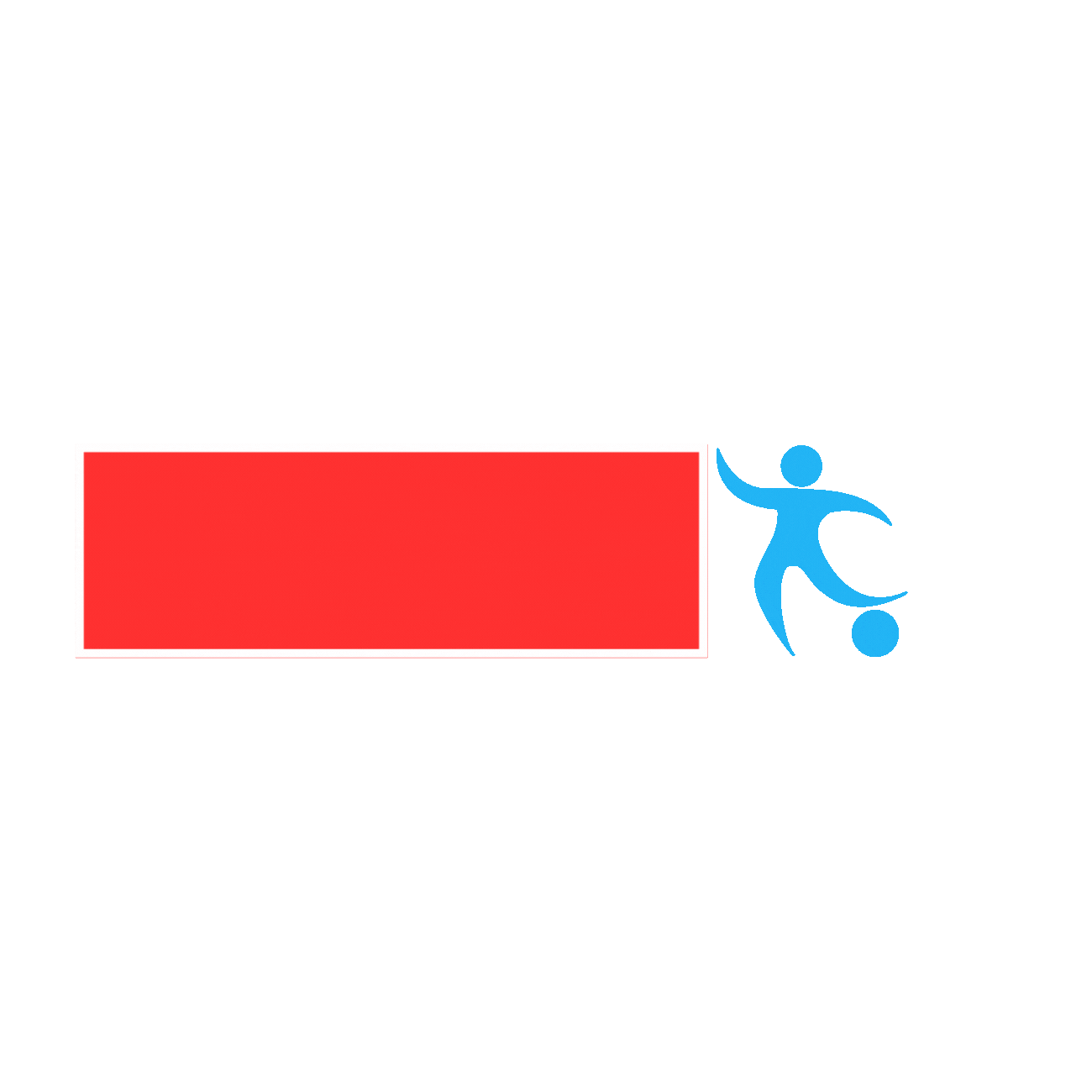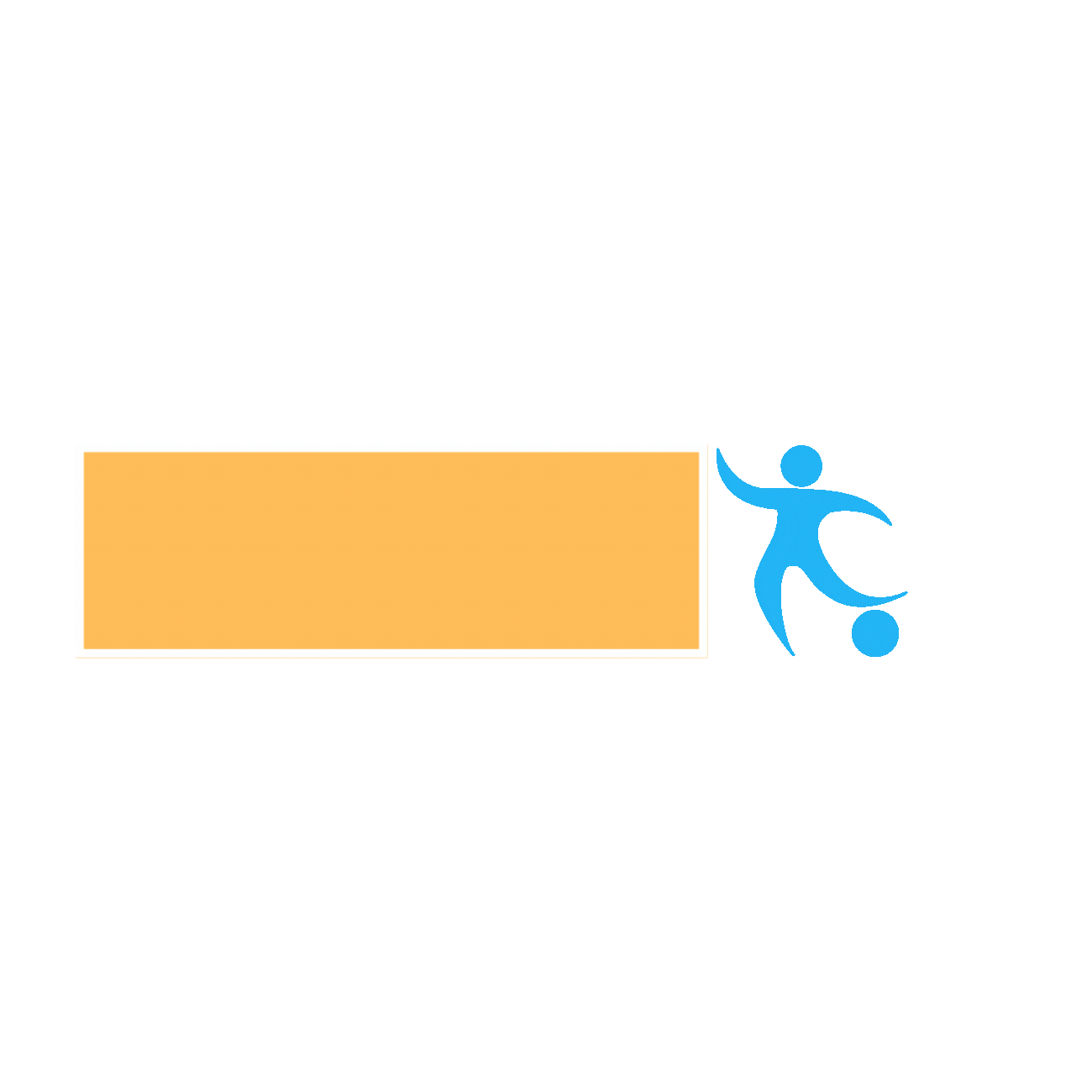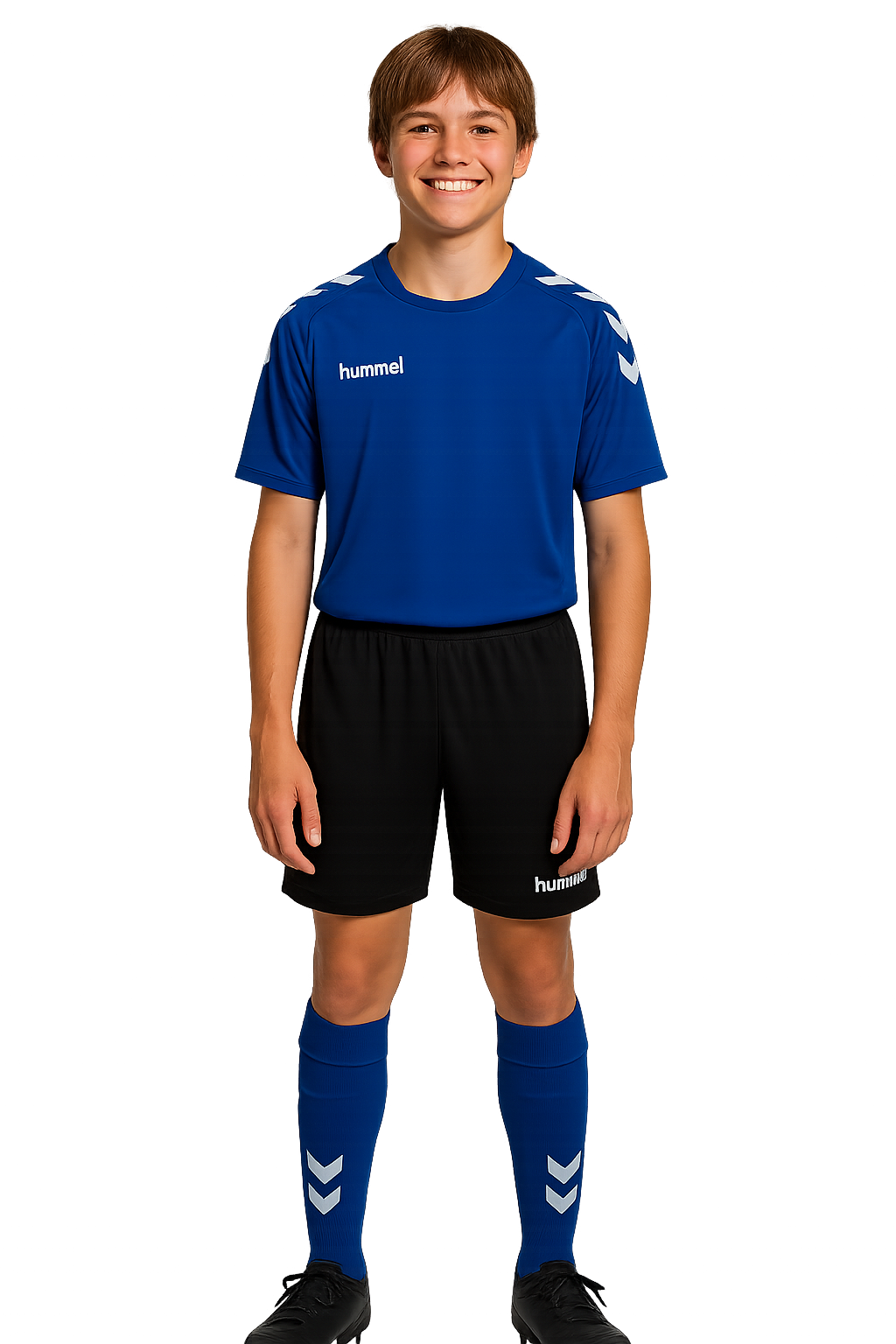Next Gen’s E-Learning Portal -

Welcome to Next Gens E-Learning Hub
At Next Gen, we believe knowledge is power. Ongoing learning is essential to providing the best possible education. That’s why we’ve organized each learning portal by age group, giving you quick and easy access to up-to-date, age-appropriate materials—right at your fingertips.

U5 and U6 Age Groups
-
“At U6, footwork development is essential because it builds balance, coordination, and confidence with the ball—laying the foundation for all future soccer skills.”
Here are a few skills in order to work on this part of the game:
-
“At U6, arrival activities are important because they engage players the moment they step on the field, build routine and focus, and maximize fun and touches on the ball before training begins.”
Here are some examples of activities you could do:
-
At this age, it is important to keep the kids entertained and interested in the sport. If you are able to do games or activities that are engaging and related to what you want to teach, then the players will be developing really well.
Here are some examples of activities that can be done:
-

U8 Age Group
-
Coaching U8 soccer is about creating a positive, fun, and engaging environment where young players can learn the fundamentals of the game while developing a love for soccer. At this age, players are typically 7 or 8 years old, and their attention spans, coordination, and understanding of teamwork are still developing. The best coaches focus on simplicity, encouragement, and enjoyment rather than competition or results.
The foundation of U8 coaching begins with developing basic skills—dribbling, passing, receiving, and shooting. Every practice should include plenty of touches on the ball. Small-sided games like 3v3 or 4v4 are ideal, as they give players more opportunities to be involved and make decisions. Activities should be short, energetic, and game-like, keeping players active and engaged.
A good U8 coach also understands the importance of fun and motivation. Players should leave each session smiling and excited to return. Coaches can use imaginative games (like “sharks and minnows” or “pirates and treasure”) to teach skills without making it feel like formal drills. Positive feedback and patience are essential—mistakes are part of learning, and players need confidence to try new things.
At this stage, teamwork and sportsmanship should be emphasized over winning. Coaches should encourage players to share the ball, support teammates, and respect opponents and referees. Clear, simple communication and consistent routines help create structure while allowing players to enjoy freedom and creativity on the field.
-
At the U8 level, players are starting to develop basic shooting skills that set the foundation for effective finishing.
For Shooting:
Use the Inside of the Foot: Focus on using the inside of the foot for accurate shots, aiming for corners of the goal.
Proper Foot Placement: Encourage players to strike the ball with their laces for power while keeping the non-kicking foot beside the ball for balance.
Shooting with Both Feet: Practice shooting with both feet to increase confidence and versatility in front of goal.
For Finishing:
Close-Range Finishing: Work on finishing quickly with one touch in front of the goal (i.e., tapping in passes or rebounds).
Composure Under Pressure: Help players stay calm when finishing, focusing on accuracy over power.
Quick Decisions: Teach players to make quick decisions about when to shoot or pass based on their position and the goalkeeper’s placement.
-
For U8 soccer defending, the key idea is: keep it simple, active, and fun. At this age, defenders don’t need complex tactics — just the basics:
1. Stay between the attacker and the goal.
– Teach them to always “be the wall” protecting the goal.2. Don’t dive in.
– Encourage them to slow the attacker down instead of lunging and getting beat.3. Move their feet.
– Little “side shuffle” steps to stay in front, not just running straight at the ball.4. Work together.
– One player pressures the ball, the others cover behind. (Even if it’s messy, they start to learn teamwork.)5. Win the ball, then look up.
– When they get it, try to pass or dribble into space instead of kicking it away.👉 Think of it as teaching “delay, deny, and then win” — at a super basic level.
-
At the U8 level, players need to focus on basic footwork skills that help with ball control, passing, dribbling, and defending.
For Dribbling:
Inside & Outside Foot Touches: Use both the inside and outside of the foot to maintain control and change direction.
Dribble with Both Feet: Encourage dribbling with both feet for better balance and unpredictability.
Quick Turns & First Touch: Develop soft, controlled touches and sharp turns to keep the ball close.
For Passing:
Inside Foot Passing: Pass accurately with the inside of the foot for short, firm passes.
Outside Foot Passing: Experiment with passing using the outside of the foot for creativity.
For Defending:
Side-Stepping (Shuffling): Practice quick lateral movements to stay in front of opponents.
Closing Down: Approach attackers at an angle, using small, quick steps.
Agility Drills:
Cone Weaving: Develop agility and control with weaving drills.
Quick Feet: Use ladder drills or jump rope for speed and coordination.
These skills help U8 players build confidence and control on the ball while preparing them for more advanced techniques in the future.
-
1. 1v1 Gate Defending
Set up small gates (two cones) around the field.
Attacker tries to dribble through any gate.
Defender’s job: stay in front and block.
👉 Teaches staying between ball and goal, moving feet, and timing tackles.2. Sharks and Minnows (with defending twist)
Players (minnows) dribble across the grid.
Defenders (sharks) try to win the ball and kick it out.
👉 Fun, chaotic way to practice pressuring the ball and tackling.3. 1v1 to Small Goals
Two mini goals.
One attacker, one defender.
Attacker tries to score, defender tries to block and then counter.
👉 Helps kids practice slowing down an attacker, not just chasing.4. Defend the Castle
Small group builds a “castle” with cones in the middle.
Other players dribble in and try to knock it over.
Defenders protect it by blocking.
👉 Builds teamwork and the idea of protecting space.5. 🔑 Tip: Keep lines short (or none at all). Every kid should be moving most of the time, not waiting.
-
At the U8 level, players are beginning to move beyond simply chasing the ball and are ready to develop a basic understanding of the different roles in attack and defense. While positions are still flexible and players should experience all areas of the field, it’s important they begin to recognize the purpose and responsibilities of attacking versus defending.
In Attack:
Players should start to understand that when their team has the ball, they are all part of the attack. They should learn to:Spread out to create space.
Look for teammates to pass to, especially those in better positions.
Move into open space to support the player with the ball.
Stay involved even when they don’t have the ball, by anticipating the next pass or rebound.
In Defense:
When the team loses possession, all players need to transition into defense. Key concepts they should begin to grasp include:Getting between the ball and their goal to protect it.
Marking opponents by staying close enough to challenge for the ball.
Tracking back quickly to help defend as a team.
Understanding roles like who pressures the ball and who provides cover.
At this stage, learning these ideas happens best through guided play, small-sided games, and clear, simple instructions from coaches. The goal is not rigid tactical structure, but rather building awareness of team play and decision-making depending on whether the team is attacking or defending.

U10 Age Groups
-
Formations
Stick to simple shapes (like 2-3-1 in 7v7 or 3-3).
Main goal: help players see balance — some up front, some in the middle, some in the back.
Don’t over-coach exact spots; instead, teach areas of responsibility.
Tactics
Spacing: Players shouldn’t all chase the ball. Encourage them to “make the field big” on offense, and “make it small” on defense.
Support: Teach the triangle idea — always give a teammate an option to the left, right, or behind.
Defending: One pressures, others cover.
Attacking: Look forward first, but passing sideways/backwards is okay to keep the ball.
👉 At U10, the big shift is moving from “swarm ball” toward basic team shape and cooperation.
-
Ball Mastery & Touch
Lots of small touches with different surfaces: inside, outside, sole, laces.
The goal is to feel like the ball is part of their body, not something they chase.
Balance & Agility
Stay light on the toes, knees bent, ready to change direction.
Quick shuffles and little hops build balance for defending and dribbling.
Change of Direction & Moves
Start with simple but effective turns and feints (inside/outside cuts, drag-backs, scissors, step-overs).
The focus isn’t “fancy tricks,” but helping them change direction while keeping control.
Using Both Feet
Encourage them to dribble, pass, and even try shots with their weaker foot.
The earlier this habit forms, the less one-footed they’ll be as older players.
Coordination Games
Ladder or cone work (quick steps, side-to-side movement).
Fun games like tag-with-the-ball or relay races keep it playful but build speed and coordination.
-
At this age, kids love to score goals, but many still just “kick it hard.” Shooting development teaches them to control their technique, aim with accuracy, and choose smart shots instead of just blasting the ball.
Key Areas of Development
Basic Technique
Laces shot for power: lock ankle, head over ball, strike middle of ball with shoelaces.
Inside foot shot for accuracy: especially good for close range.
Emphasize keeping shots low and on target before worrying about power.
Balance & Body Position
Plant foot points toward the target.
Leaning too far back = ball flies high.
Encourage kids to “chest over the ball” when striking.
First Touch & Setup
A good first touch sets up a good shot.
Practice receiving and shooting quickly, not just standing over the ball.
Using Both Feet
Encourage trying weaker-foot shots in fun games (e.g., double points if scored with weak foot).
Decision-Making
Teach when to shoot vs. when to pass.
Reinforce that a “good shot” isn’t always the hardest — it’s the one that gives the team the best chance to score.
-
Up to this age, most kids focus on attacking and scoring. But good defending skills help them learn team responsibility, discipline, and how to win the ball without just kicking it away.
Key Areas of Development
Individual Defending (1v1 skills)
Stance & balance: stay low, knees bent, light on feet.
Delay, don’t dive: slow the attacker down, don’t lunge in.
Body positioning: stay between attacker and the goal.
Small Group Defending
Introduce pressure and cover: one defender presses the ball, the other supports behind.
Teach kids to “slide over” when the ball moves, so the team shape stays compact.
Tackling Technique
Block tackles (inside of the foot, firm and safe).
Poke tackles (toe poke to knock the ball away).
Stress timing and safety — no wild lunges.
Transition Mindset
If you lose the ball, defend immediately (“first defender” idea).
If you win the ball, look to keep possession instead of just clearing.
Teamwork & Communication
Encourage simple talk: “I’ve got ball!” or “Cover!”
Start building the idea that defending is a team job, not just the goalkeeper’s.
-
Coaching points for your sessions
Keep reps short and intense — kids at this age lose focus if drills drag.
Always tie it back to a game-like situation (e.g., “This move helps you escape a defender”).
Celebrate creativity and mistakes — experimenting is how they’ll grow.
Make sure every player practices defending — not just the “defenders.”
Keep lines short — every player should shoot many times in a session.
When practicing shooting and finishing, praise accuracy first: hitting the target matters more than scoring at this age.

U12 Age Group
-
Now we’re stepping up a level. At U12 (9v9) kids are ready for a bit more tactical structure. They’re starting to understand space, teamwork, and roles, so formations matter more than at U8/U10.
Common 9v9 Formations at U12
3-3-2 (balanced)
3 defenders (one central, two wide)
3 midfielders (can play flat or with a central + two wide)
2 forwards
👉 Simple shape, easy balance of defense and attack.
2-4-2 (possession-focused)
2 center backs
4 midfielders (often diamond: 1 holding, 2 wide, 1 attacking)
2 forwards
👉 Strong in midfield, teaches control and passing options.
3-2-3 (attacking width)
3 defenders
2 midfielders (central)
3 forwards (wingers + striker)
👉 Gives width and attacking power, but needs disciplined defenders.
Tactics Development at U12
Defending Shape: Back line learns to shift side-to-side together; midfield helps by pressing and covering.
Building Out: Encourage passing from the goalkeeper/defense instead of just clearing.
Width & Depth: Teach players to “make the field big” when attacking (wide players stretch the field), and “make it small” when defending.
Support Play: Midfielders give angles — triangles everywhere.
Transition Awareness: If ball is lost, nearest player pressures; others recover into shape quickly.
👉 At U12, the main aim is to move from “positions as spots” to “positions as roles.” Players should start to understand:
-
Why Possession Development Matters at U12
At this age, players are ready to learn how to work together to keep the ball, instead of panicking or forcing it forward. It teaches patience, teamwork, and decision-making — all skills they’ll need as the game gets faster.
Core Concepts to Teach
Spacing – Spread out to make the field big. No bunching around the ball.
Support Angles – Always give 2–3 passing options (triangle idea).
First Touch – Control the ball into space so the next action is easier.
Ball Circulation – If pressure is tight, go sideways or backwards to keep it.
Decision-Making – Teach the idea: “Can I pass forward? If not, can I keep it safe?”
Development Scheme (Progression)
Step 1: Individual Mastery
Ball control under pressure (tight-space dribbling, shielding).
Weak-foot touches to expand comfort.
Step 2: Small Group Possession
2v1s and 3v1s (keep-away games) — simple rondos where players learn angles and quick passing.
Emphasize movement off the ball — don’t stand still after passing.
Step 3: Larger Possession Games
4v2 or 5v3 rondos in grids, working on ball speed and decision-making.
Add a rule: X passes before scoring or switching zones.
Step 4: Game-Like Situations
Small-sided games (5v5 or 6v6) where the objective is number of passes, not goals.
Condition games (e.g., every player must touch the ball before shooting).
Step 5: Full Team Play
Introduce building out from the back (goalkeeper, defenders, midfielders).
Encourage patience — it’s okay to recycle the ball backward to keep possession.
-
Why Footwork Development at U12 Matters
Good footwork lets players:
Control the ball under pressure.
Change direction quickly.
Stay balanced while dribbling, tackling, or shooting.
Use both feet with confidence.
It’s not about tricks — it’s about being quick, coordinated, and comfortable on the ball.
Core Skills to Target
Ball Mastery – quick touches with all parts of the foot (inside, outside, sole, laces).
Agility & Balance – fast feet, light on toes, ready to pivot in any direction.
Change of Direction – feints, cuts, and turns (scissors, step-overs, drag-backs, Cruyff turn).
Both Feet – passing, dribbling, and shooting with left and right.
Ball + Body Coordination – combining ball work with body movement (shuffles, pivots, jumps).
Development Scheme (Progression)
Step 1: Foundations
Daily ball touches (toe taps, foundations, inside–outside touches).
Agility ladder work (1–2 minutes, lots of variations).
Step 2: Change of Direction
Cone dribbling with cuts and turns.
Introduce moves like scissors and step-overs.
Practice “sell the fake” (body feint + quick acceleration).
Step 3: Speed + Pressure
Timed dribbling races through cone patterns.
1v1 challenges where attacker uses footwork to beat a defender.
Step 4: Game Application
Small-sided games with conditions (e.g., must beat one player before passing).
Shielding games: attacker protects ball, defender tries to steal in 1v1.
Step 5: Integration
Combine footwork with finishing (dribble past cone/defender → shoot).
Possession rondos that reward creative footwork to escape pressure.
Coaching Emphasis
Technique first, speed second. Smooth touches > rushing.
Celebrate creativity, even when it fails — mistakes are learning moments.
Encourage “eyes up” while dribbling to build awareness.
Use both structured drills and free-play challenges.
-
Key Focus Areas
Technique First
Laces for power, inside foot for accuracy.
Emphasize planting foot toward target, chest over ball.
Finishing Types
1-touch finishes (crosses, rebounds).
Finishing on the dribble (striking in stride).
Both-foot finishing (reward weak-foot attempts).
Composure in the Box
Teach players to stay calm, look up, and place the shot instead of rushing.
Game Realism
Encourage finishing under pressure (defender chasing, time limit, goalkeeper).
Stress decision-making: shoot vs. pass.
Coaching Tips
Accuracy before power — “hit the target” is priority.
Lots of reps in game-like setups (not just static balls).
Celebrate creativity — chips, volleys, toe-pokes — they build confidence.
-
Here’s a brief overview of defending development for U12:
Key Focus Areas
1v1 Defending
Stance: low, balanced, light on feet.
Delay attacker instead of diving in.
Body positioning: force attacker away from goal/onto weaker foot.
Small Group Defending
Pressure + cover: one player presses, others provide backup.
Communication: simple cues like “I’ve got ball” or “Cover.”
Tackling Technique
Block and poke tackles, done safely and on time.
Emphasize patience — wait for the right moment.
Team Shape
Defenders shift side-to-side together.
Midfielders help close space; whole team defends, not just the back line.
Transition Mindset
Lose the ball? React quickly and defend.
Win the ball? Keep possession, don’t just kick it away.
Coaching Tips
Praise effort, positioning, and teamwork — not only winning the ball.
Use small-sided games to make defending realistic and competitive.
Teach that defending is about slowing down and working together, not just tackling.

U14 Age Groups
-
Formation and Tactics Development at U14 Soccer
At the U14 level, players are ready to handle more tactical responsibility. They can understand not just “where to stand,” but also why their positioning matters in different phases of the game. Coaches should emphasize formations that balance development with competitiveness, while allowing players to rotate through different roles.
Formations:
Two of the most common systems in 11v11 U14 soccer are the 4-3-3 and the 4-4-2. The 4-3-3 encourages width, pressing, and fluid attacking play, with wingers providing space and central midfielders learning to link defense and attack. The 4-4-2 provides stability, helping players learn defensive shape, compactness, and how to transition quickly into attack. Both systems give young players a framework for understanding spacing, balance, and team roles.Tactics:
At this age, tactical teaching should cover both attacking and defending principles. In attack, players learn to use width and depth, maintain spacing, and move the ball quickly through short passes and combination play. Midfielders should begin to recognize when to switch play or when to play forward early. In defense, the team should practice pressing as a unit, with one player pressuring the ball, others covering, and the back line holding shape to deny space. Transition play is critical: reacting quickly after losing or winning possession builds awareness and sharpness.Development Focus:
The ultimate goal at U14 is to help players understand the game as a whole. They should begin reading situations, making decisions about when to press or drop, when to keep possession or counter, and how their role fits within the team’s shape. -
The Importance of Possession and Maintaining the Ball in U14 Soccer
As players grow into the U14 level, the game becomes faster, more physical, and more tactical. Possession of the ball becomes one of the most important parts of success. Maintaining possession allows a team to control the tempo of the game, create higher-quality scoring chances, and reduce the opponent’s opportunities to attack.
Controlling the Game:
When a team keeps the ball, they dictate the rhythm. Possession forces the opponent to chase, which tires them and opens up spaces to exploit. Players begin to learn that patience and circulation of the ball can be more effective than forcing quick, risky passes.Creating Better Chances:
Maintaining possession gives the attacking team time to build. By moving the ball through short passes and switching play, players can stretch the defense and create opportunities in dangerous areas. This teaches players that a well-timed pass often creates a better chance than an individual effort.Defensive Benefit:
Possession is also a form of defense. If your team has the ball, the opponent cannot score. Teaching players to value the ball reduces “panic clearances” and helps the team stay compact and in control.Development of Players:
At U14, possession play helps players develop composure, vision, and decision-making. They learn when to pass forward, when to recycle the ball sideways or backwards, and how to move off the ball to support teammates. These skills are crucial for higher levels of soccer. -
Footwork Development in U14 Soccer
At the U14 level, players are maturing physically and tactically, so footwork must go beyond basic ball control. Good footwork is the foundation for technical skill, speed of play, and the ability to compete under pressure. Developing refined footwork allows players to move efficiently with and without the ball, react quickly to changing situations, and execute advanced techniques with confidence.
Ball Control and Mastery:
Players should continue refining their touch using all parts of the foot — inside, outside, laces, and sole. Quick, precise touches are essential for dribbling in tight spaces and maintaining possession under defensive pressure. Training both feet equally is critical to prevent predictability.Agility and Change of Direction:
At this age, footwork must also emphasize agility. Players should practice sharp cuts, feints, and turns (such as step-overs, Cruyff turns, and scissors) to beat defenders and change pace. This agility also supports defensive movements, helping players stay balanced when shifting laterally or closing down attackers.Speed of Play:
U14 players must learn to combine footwork with awareness. It’s not just about moving the ball; it’s about doing so quickly, while keeping their head up to read the game. Fast footwork drills, rondos, and game-like exercises help players develop quick decision-making under pressure.Coordination and Strength:
Finally, footwork training should tie into overall athletic development. Exercises like ladder drills, cone work, and balance challenges improve coordination and stability, ensuring players can execute skills at full speed in real matches. -
Shooting and Finishing Development in U14 Soccer
By the U14 level, players must progress beyond simply kicking the ball hard toward goal. Shooting and finishing become about technique, decision-making, and composure under pressure. Coaches should help players develop a variety of finishing skills so they can score in different situations.
Technical Development:
Players should refine striking with the laces for power and the inside of the foot for accuracy. They also need to practice volleys, half-volleys, and first-time finishes to handle balls arriving at different heights and speeds. Using both feet is essential, as defenders at this level will force players to weaker sides.Finishing Under Pressure:
At U14, players must be able to finish while dribbling, with defenders closing in, and against goalkeepers who react quickly. Training should replicate game conditions: shooting on the run, quick turns in the box, and 1v1 situations with the goalkeeper.Decision-Making:
Good finishing isn’t just about technique — it’s about choosing the right option. Players should learn when to shoot early, when to take an extra touch, and when to pass to a better-positioned teammate. Building composure in front of goal helps reduce rushed or forced shots.Psychological Aspect:
Confidence is key. Players who are encouraged to try different types of finishes — chips, curls, toe-pokes — gain the creativity to find solutions in tight situations. Repetition in training builds the instinct to stay calm and clinical under pressure. -
Defending Development in U14 Soccer
At the U14 level, defending moves from simple marking and tackling toward a more tactical, team-oriented approach. Players begin to understand that defending is not just about winning the ball back, but also about positioning, anticipation, and communication.
Individual Defending:
Players should refine 1v1 defending skills: closing space quickly, staying balanced, and showing attackers into less dangerous areas. Tackling technique — both standing tackles and intercepting passes — becomes sharper, with an emphasis on timing rather than diving in.Group Defending:
Defending as a unit is crucial. Players at this age should learn the basics of pressing and covering: when one player steps to challenge, others must provide support and balance behind. Defenders also start understanding compactness — keeping the team tight and organized to limit space for opponents.Positional Awareness:
U14 players should be able to read the game better, anticipating passes and recognizing when to hold their line or drop deeper. Fullbacks, center-backs, and midfielders begin to specialize in their defensive roles, learning how to adjust positioning depending on the ball’s location.Communication and Leadership:
Good defending relies on constant communication. At this stage, players must develop the habit of talking to teammates: calling out marks, warning of runners, and organizing shape. Leaders often emerge in defensive roles, especially center-backs or holding midfielders.Mental Approach:
Finally, U14 players learn that defending requires patience, discipline, and resilience. A smart defender delays attackers, waits for the right moment, and doesn’t get discouraged by mistakes. -
Developing U14 Players: Best Practices for Coaches
At age 14, players are entering a crucial phase of their soccer development. Physically, mentally, and technically they are maturing, and coaches have the opportunity to significantly influence their long-term trajectory. Good U14 coaching balances continued technical skill work with tactical understanding, mental and physical growth, and creating an environment that fosters confidence, creativity, and teamwork.
Key Principles
Holistic Development
U14 players benefit when coaching addresses more than just technical skills. Mental aspects (confidence, decision-making), physical growth (coordination, speed, strength), and character (teamwork, effort, resilience) are as important. Coaches should monitor growth spurts, fatigue, and psychological states.Technical Skills Under Pressure
Techniques (passing, dribbling, first touch, shooting) must be practiced not only in isolation but also under pressure and with time constraints. This helps transfer skills into real game situations.Tactical Understanding
Players should begin to understand more complex tactics: positioning in different phases (attack, defense, and transition), team shape, pressing, exploiting space, decision-making on when to pass vs when to dribble, switching play, etc.Small-Sided Games & Game-Realism
Much of the learning happens when players are engaged in small-sided games (e.g. 5v5, 7v7) or with constraints that simulate match pressure. This gives them more touches, more decisions, more variety.Feedback, Reflective Practice & Ownership
Giving players specific, actionable feedback is crucial. Also encouraging them to think about what they did well, what they can do better, and to take ownership of their development (extra work, mental prep) helps long-term growth.Consistency and Progressive Overload
Skills and tactics should build gradually across training sessions and over the season. Repetition helps, but with increasing challenge (speed, pressure, decision complexity).Enjoyment, Creativity & Safe Risk-Taking
Players need to still feel fun and feel free to try things, make mistakes, innovate. If you suppress creativity in favor of rigid structure, you may stunt growth.Practical Approaches & Methods
Use mixed drills: begin with skill work (technique) → add pressure or defender → end with game or small-sided condition.
Vary training so players get all roles — fullbacks, midfielders etc. — so they understand different perspectives.
Use video (game footage, analysis) to help players see themselves, tactics, shape.
Incorporate physical training appropriate for age: agility, coordination, maybe strength, but avoid overtraining.
-
Useful Resources
Here are websites and organizations that provide drills, curricula, coach education, and ideas specially applicable to this age group:
SoccerDrive.com – has a full “U13-U14 Curriculum,” plus many age-appropriate drills and practice plans. SoccerDrive.com
Touchtight Coaching – drills for U12-U14 that focus on technical + tactical understanding, including possession, movement, etc. Touchtight
SoccerXpert – free library of drills and practice sessions by age group, including U14-16 drills. Good for finding drills by topic (shooting, defending, possession, etc.) SoccerXpert
Coerver® Coaching – for developing creativity, confidence, and skill through their methods; also helpful for coach education. Coerver Coaching
Indiana Soccer / State Soccer Associations – often offer coach education (online learning, sessions on attacking/defending concepts) that are tailored to youth/club coaches. Indiana Soccer
Rush Soccer Development – has resources and tools for both coach and player growth; useful “Train @ Home” programs and coaching manuals. Rush Soccer
Download the Next Gen App Here
Secure Your Spot Today—Book Now!



